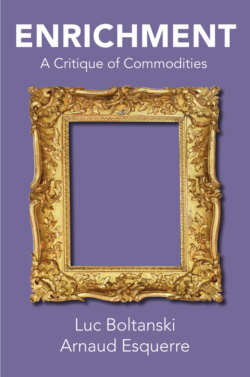Читать книгу Enrichment - Luc Boltanski - Страница 30
A new perspective in economic analysis
ОглавлениеJack Lang’s directives, which he implemented when the left came to power in France in 1981, accompanied and sometimes preceded a turn that was taking place among economists, especially among those who had been influenced by Marxism or by the economic outlook of the radical American left. A number of the latter thinkers had worked in French research organizations, especially INSEE. Their work accompanied the planning that took place in the 1960s and, as the 1960s gave way to the 1970s, their models sought to integrate the effects of international competition on an economy that had been conceived, after the Second World War, primarily within national frameworks.39 In the 1980s, these economists shared a serious concern about competitiveness, but they also agreed that the economic models centered on the major industrial firms were being exhausted, although they did not give up on the project of a public framing structure for the economy. That project led them to resist the economic trend that was fast becoming dominant, the trend toward placing particular stress on demand and on the dynamics of international commerce. The work of these economists is relevant to the genealogy of the enrichment economy that we are trying to depict in broad strokes, because, even though they still concentrated on production rather than on the exchange and circulation of things, they sought to multiply the directions that competition and growth could take by tracing paths that deviated from that of the mass industrial economy. This orientation gave them common ground with economists who were attentive to sociology and, more generally, to the social and political sciences that were developing a new orientation in the second half of the 1980s: the economics of conventions.40
As one example of this new approach, we can look at a work by Michael Piore and Charles Sabel, The Second Industrial Divide, published in the United States in 1984 and in 1989 in French translation as Les chemins de la prospérité: de la production de masse à la spécialisation souple (The paths of prosperity: from mass production to supple specialization). The book was highly influential in Europe, especially in France and Italy, among scholars who focused on small, networked, sometimes family-run businesses, on the dynamics of proximity, and on local development policies centered in regional agencies and industrial districts.41 In the preface to the French edition, Piore and Sabel undertook to show that the opposition on which their book was based, between “two antagonistic modes of technological progress” (assembly-line production on the one hand, an artisanal economy on the other), is particularly valid for France. While “nineteenth-century France appeared as a country with an artisanal economy par excellence,” unlike “its rivals in industrial competition” Great Britain and the United States, France transformed itself after the Second World War, by a deliberate political choice on the part of its leaders, into a prototypical mass production economy rivaled only by that of the United States.42
The economic model that Piore and Sabel sought to promote in the mid-1980s was supposed to be valid for any type of production. But companies that had turned toward a luxury economy served as their primary models, and it was chiefly with respect to the manufacture of exceptional products that the turn advocated by the authors proved to be realistic. A case in point can be found in the textile district of Prato, in Tuscany. Faced with competition from less expensive textiles made in Japan and Eastern Europe, Prato became a paradigmatic example of local development based on networked small businesses. It succeeded owing to two factors: “a long-term shift from standard to fashionable fabrics, and a corresponding reorganization of production from large integrated mills to technologically sophisticated shops specializing in various phases of production.”43 Lyon offers a counter-example: it had stopped producing artisanal silk in the late nineteenth century in favor of industrial spinning mills, and it saw its textile industry disappear in the late 1950s. In the context of the “industrial districts” of “the third Italy,” middle-sized factories benefited from the activation of familial and political solidarities in an environment shaped by dynamic regional entities; this explains the success of clothing companies such as Benetton or, later, Diesel, both of which attained the status of worldwide groups.44
As a second example, we can consider a book published in 1993 by Robert Salais and Michael Storper, Les mondes de production: enquête sur l’identité économique en France.45 This work is particularly relevant to our effort to grasp the moment at which the orientation toward exceptional goods with a strongly cultural tenor was beginning to be considered as a way to compensate for the decline in mass production that was affecting the industrial regions in France. By relying on the notion of “possible worlds,” borrowed from the economy of conventions, the authors distinguished between an industrial world in which price-based competition is driven by “economies of scale and costs” and a world in which competition relies on an “economy of variety (scope)” that includes both high-tech objects and objects of superior quality or objects that are exceptional in some other way. As it happens, one of the pitfalls of the French economy at the time was that it was too polarized toward industry, where it was not succeeding very well, to the detriment of an “economy of variety-scope,”46 which was particularly successful in the United States, in the area of high-tech products, and in Italy, in the area of luxury goods. It follows that “the future [belonged] to products that are not strictly ‘industrial’”47 and that rely on conventions of quality. Since the publication of Salais and Storper’s book, France has in fact seen growth in sales of products in areas that the authors deemed promising, such as wine, perfume, jewelry, and fashion.
